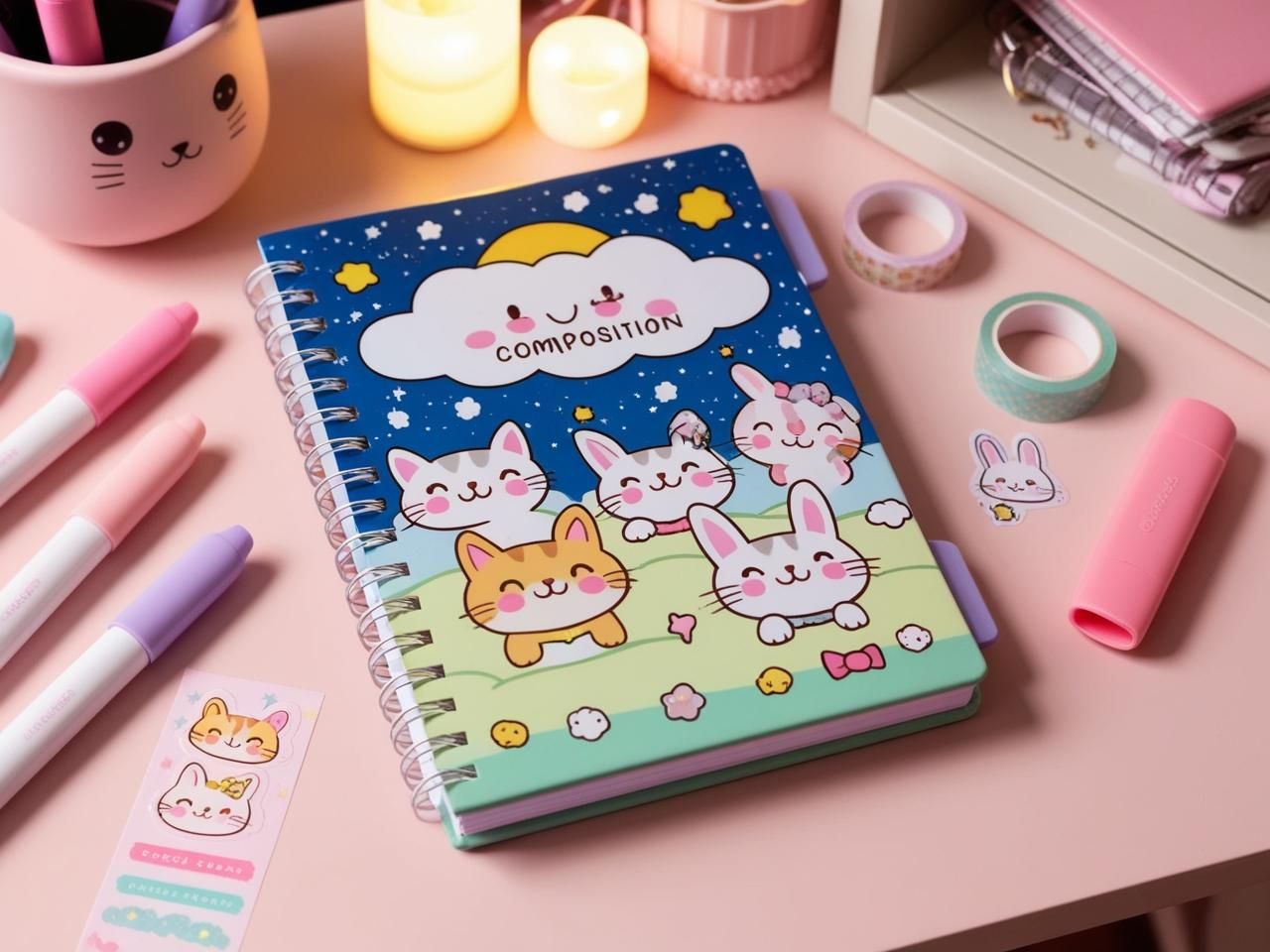- COMPOSITION NOTEBOOK
- Guides
- Why Is It Called a Composition Notebook? The History Behind the Name
Why Is It Called a Composition Notebook? The History Behind the Name
- Category: Guides

The composition notebook has been a timeless classic for students and professionals for decades. Known for its marble cover and durable design, it remains a staple for note-taking, journaling, and academic work. But have you ever wondered why it’s called a “composition notebook”? This guide delves into its history, features, and evolution to uncover the story behind its name.
Table of Contents
ToggleWhat Is a Composition Notebook?
A composition notebook is a bound notebook with ruled pages and a distinctive marble-patterned cover. Designed for durability and simplicity, it’s widely used for academic and professional purposes.
Definition and Features
Typically sized at 9.75 x 7.5 inches, a composition notebook features sewn or stitched binding for longevity. Page layouts include wide ruled, college ruled, and unruled formats, making them versatile for different needs. Shop Composition Notebooks on Amazon | Shop Composition Notebooks on Google Shopping
Common Characteristics
Composition notebooks are known for their sturdy covers, compact size, and durability. Their sewn binding ensures that pages stay intact, even with frequent use.


Why Is It Called a “Composition Notebook”?
The term “composition notebook” reflects its original purpose as a tool for writing compositions, such as essays or creative assignments. Its name and design are deeply rooted in educational history.
The Origin of the Term “Composition”
In the 19th century, composition was a fundamental part of education. These notebooks were specifically created to help students structure their thoughts and practice writing essays. Explore Composition Notebooks on Etsy
Connection to Academic Use
Teachers widely adopted composition notebooks for their structured, ruled pages, which guided students in maintaining neat handwriting and organized work.
Durable Design for Repeated Use
The sturdy covers and stitched bindings ensured that students could rely on these notebooks for an entire school term without the pages falling out.
The History of Composition Notebooks
The composition notebook has a rich history, from its European origins to becoming a staple in American schools.
European Origins
In 19th-century Europe, marbleized paper was a popular choice for bookbinding due to its affordability and durability. This design was later applied to notebooks, creating the first composition notebooks.
Popularization in the United States
During the early 20th century, composition notebooks gained popularity in American schools due to their practicality and low cost. They became an essential tool for students.
Evolution Over Time
While the black-and-white marble design remains iconic, modern composition notebooks now come in a variety of colors, themed covers, and even eco-friendly options. Shop Colorful Composition Notebooks on Amazon
Why the Marble Design?
The marble design of composition notebooks is both practical and iconic, contributing to their enduring popularity.
Aesthetic and Practical Reasons
The marbleized pattern was chosen for its ability to hide wear and tear, ensuring that notebooks maintained a neat appearance even after extensive use.
Cost-Effective Manufacturing
Marbleized paper was inexpensive to produce, making it a practical choice for affordable, mass-produced notebooks.
Iconic Recognition
The marble cover became synonymous with composition notebooks, making them instantly recognizable across generations.
Modern Uses of Composition Notebooks
Composition notebooks remain a versatile tool for various purposes, from academics to creative endeavors.
Academic Settings
Still widely used in classrooms, these notebooks are perfect for note-taking, journaling, and essay writing. Shop Academic Composition Notebooks
Creative Writing
Writers love composition notebooks for brainstorming, drafting, and capturing ideas.
Professional Use
Trusted by professionals, these notebooks are often used for meeting notes, project planning, and task management.
Final Thoughts
The composition notebook has stood the test of time thanks to its practicality, durability, and simplicity. Its name reflects its original purpose in education, but its versatility has allowed it to adapt to a variety of uses. Whether you’re a student, writer, or professional, a composition notebook remains a reliable and timeless choice. By understanding its history and unique features, you can better appreciate why this iconic notebook continues to be a favorite across generations.
10 Best Long-Tail Keywords with Links
- Primary Composition Notebook
- Eco-Friendly Composition Notebook
- Wide Ruled Composition Notebook
- Personalized Composition Notebook
- Colorful Composition Notebook
- College Ruled Composition Notebook
- Decomposition Notebook
- Hard Cover Composition Notebook
- Marble Composition Notebook
- Multi-Pack Composition Notebook
RELATED POST
Composition Notebook by Pieffeweb | Cookie Policy | Privacy Policy | Disclaimer













